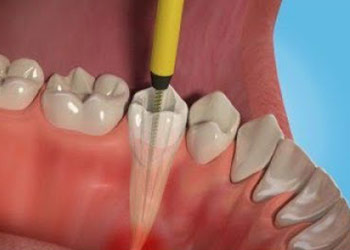Emergency Dentistry
Root Canal Treatment
Treatment
The Root canal treatment is to clean infection caused by the cavity and fill the internal hollow root. A crown is placed on the tooth to protect from further damage.


Toothache
Toothache is pain in the teeth and/or their supporting structures, caused by dental diseases or pain referred to the teeth by non-dental diseases. Tooth decay is a common reason for toothache, when severe, it is considered a dental emergency, since there may be a significant impact on sleep, eating, and other daily activities. The treatment of a toothache depends upon the exact cause, and may involve a filling, root canal treatment, extraction, drainage of pus
Gum Infection
Gum Infection – Plaque is the primary cause of gum disease. other factors can contribute to periodontal disease include: Hormonal changes, Illnesses may affect the condition of your gums ( diseases such as cancer or HIV that interfere with the immune system,diabetes) Bad habits such as smoking make it harder for gum tissue to repair itself. Poor oral hygiene habits such as not brushing and flossing on a daily basis, make it easier for gingivitis to develop. Gum bleeding, swelling, firmness, and pocket depth (the space between the gum and tooth; the larger and deeper the pocket, the more severe the disease)
Teeth movement and sensitivity and proper teeth alignment.
Teeth movement and sensitivity and proper teeth alignment.
Sensitive Tooth
Tooth sensitivity can affect one or more teeth. It’s most common when you eat or drink something hot, cold, sweet, or sour. Sometimes a breath of cold air can set it off. The pain can be sharp and sudden and can shoot deep into the nerve endings of your teeth.
Dental Decay
Tooth decay is damage that occurs when germs (bacteria) in your mouth make acids that eat away at a tooth. It can lead to a hole in the tooth, called a cavity. If not treated, tooth decay can cause pain, infection, and tooth loss
Wisdom Tooth
Wisdom teeth are a third set of molars in the back of your mouth. They usually come in between the ages of 17 and 25, and they’re spotted on X-rays.
Most people have them removed for one of these reasons:
- They’re impacted. They come in at the wrong angle.
- Your mouth isn’t big enough. Your jaw has no room for an extra set of molars.
- You have cavities or gum disease. You may not be able to reach your wisdom teeth with your toothbrush or dental floss.


